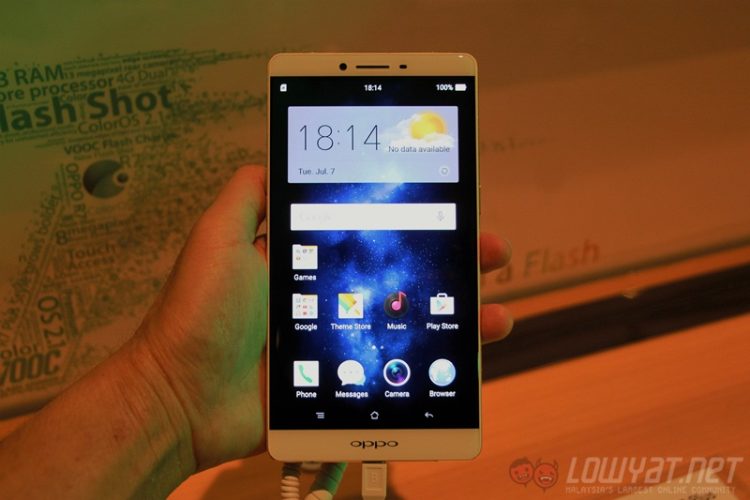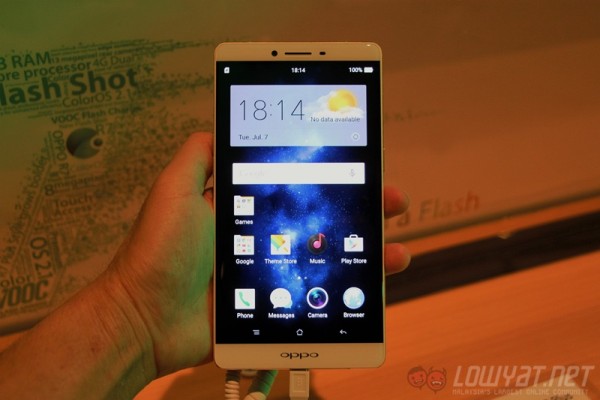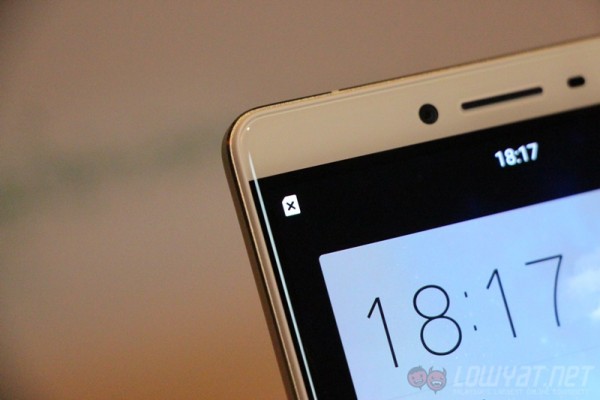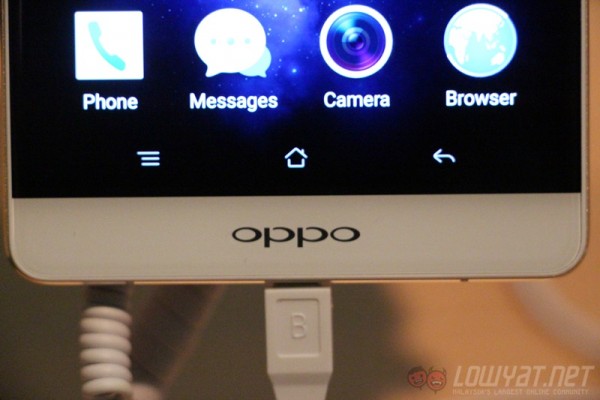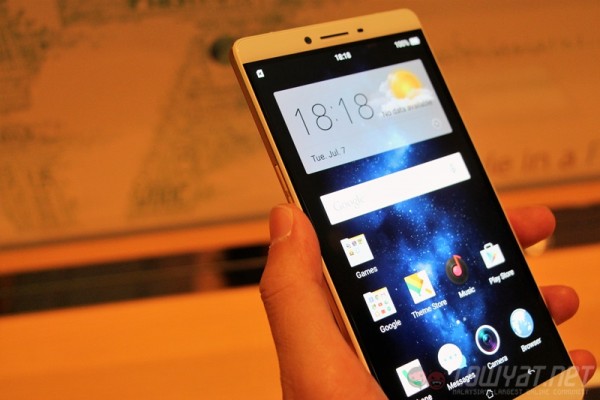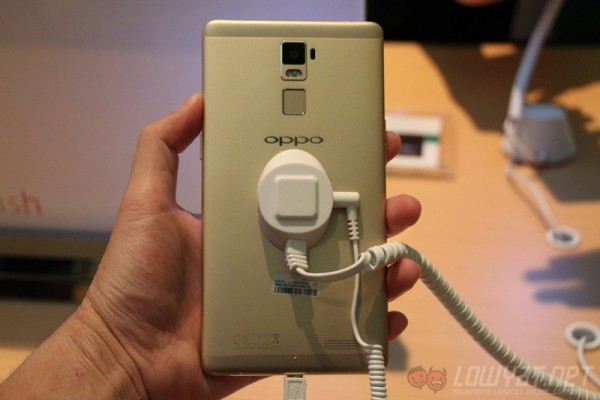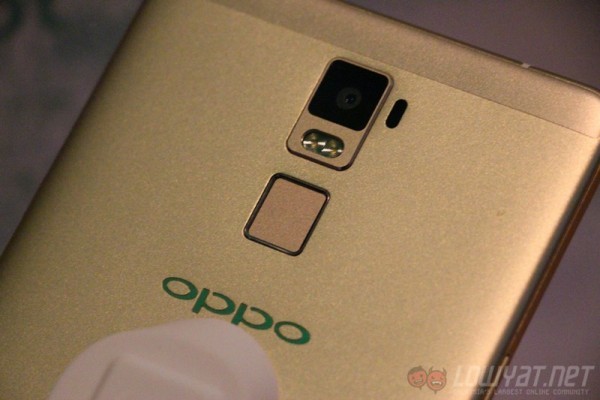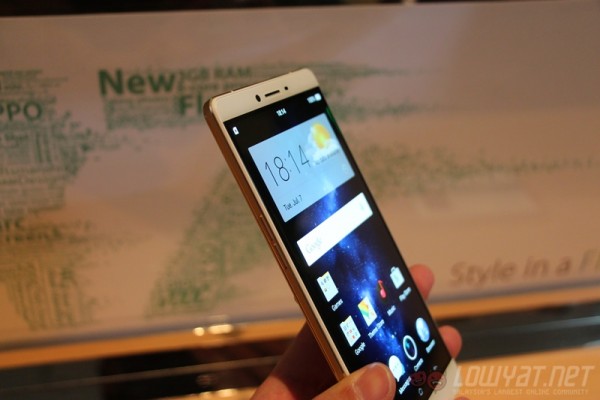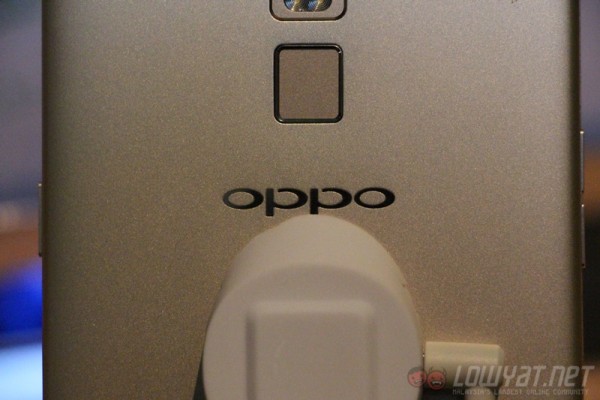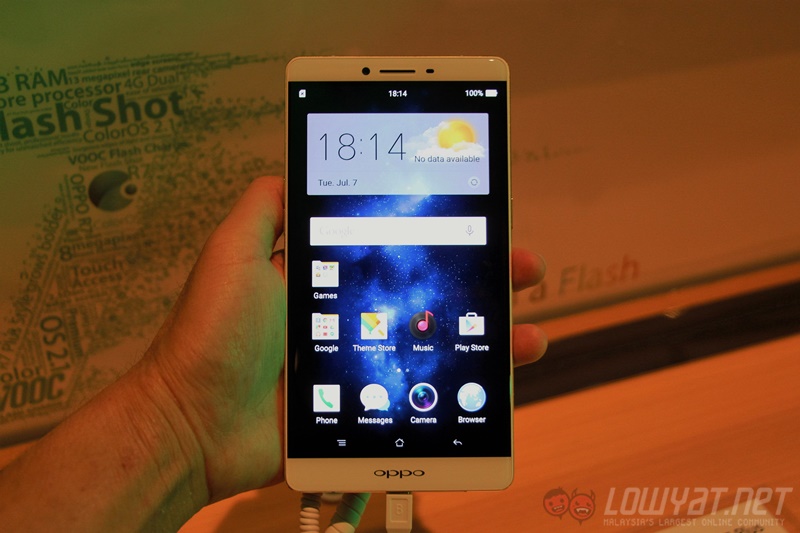Oppo Malaysia has launched two of its brand new smartphones in Malaysia just today: the 6-inch Oppo R7 Plus and its smaller variant, the 5-inch Oppo R7 Lite. I managed to get my hands on with the former device, and I asked myself this question throughout the hands on: is there a reason why it costs so much? RM1,998 for a mid-range device will surely raise a few eyebrows among consumers.
The first time I held the device, one thing is clear: the R7 Plus is one huge smartphone with quite a heft to it. After all, it’s a 6-inch device. Aesthetically, the R7 Plus is a nice device to hold and look at, thanks to its metal construction and 2.5D curved glass display. I like how there’s not much space at the bottom of the phone as well, thanks to the absence of capacitive buttons. It gives the R7 Plus a rather minimalistic appearance.
Appearance aside, the volume rocker and power button of the R7 Plus has a very nice tactile feedback. The lower placement of the physical buttons also makes a lot of sense, as it is easier to access (rather than placing it near the top of the device). However, the volume rocker does feel a tad bit sharp on its edges, which can get uncomfortable.
Moving on, we have the gorgeous 6-inch 1080p AMOLED display. The deep blacks – a signature of AMOLED displays – are absolutely satisfying to look at. The display can get pretty bright as well, which should make the R7 Plus very legible in bright outdoors.
Now that we’re done talking about its mostly positive attributes, let’s move on to the more questionable aspect: the Qualcomm Snapdragon 615 processor powering the R7 Plus. During my brief time with the device, i encounter little to no lag while browsing around the home screen, but that’s hardly taxing enough for the mid-range processor.
When I start launching multiple apps on the R7 Plus, that’s when the Snapdragon 615 struggled a little bit. It takes a slight delay to launch one app after another, but for the most part, it kept its composure. That being said, the overall user experience is nowhere as seamless as a flagship device, but it’s not exactly the worst performer either.
In the camera department, the R7 Plus seems to be able to perform adequately. The laser autofocus is pretty fast, and the overall user experience with the camera is decent. It did, however, stutter a little in less than ideal lighting condition, which requires further testing to see if it will prove to be an issue.
The software aspect of the R7 Plus is surprisingly good. ColorOS 2.1 is vastly improved in comparison to previous versions of it. It looks much more pleasant to the eyes now, and the plethora of features such as double tapping on the home button to lock the phone and double tapping the screen to wake it are a godsend.
In short, the Oppo R7 Plus is a good, if not excellent device. The thing is, the fact that it has a flagship-level asking price without a processor to match isn’t exactly a very good combination. If it had, say, a Snapdragon 808 processor instead, the R7 Plus can easily pass as a flagship smartphone. After all, it has 3GB of RAM, a fingerprint sensor, a premium construction, a very generous 4,100mAh battery, and a very nice AMOLED display.
The only thing missing is a powerful processor to match these flagship-esque hardware. If it had a more capable processor, the RM1,998 asking price would make a lot more sense. That being said, this is merely an early impression of the device. It would only be fair to give it a full review before giving a final verdict on the R7 Plus.

